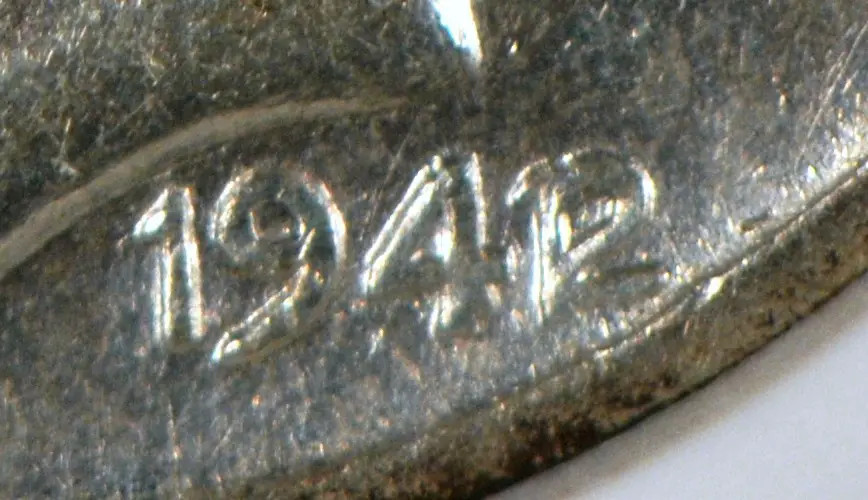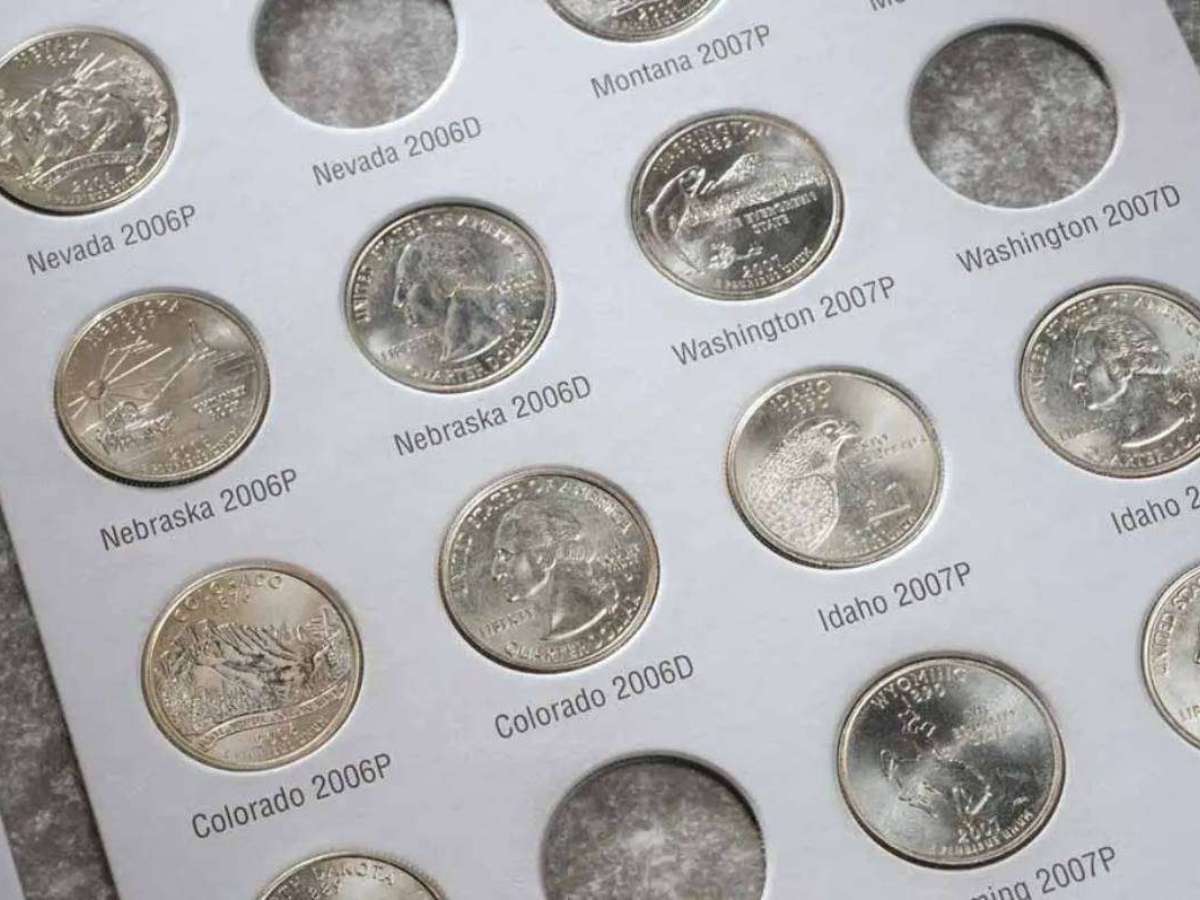Do you know what key coins are and what key date means in coin collecting? What about the difference between key date U.S. coins and semi-key date coins?
You’ll find that semi-key and key date coins are both important to coin collectors.
After reading this article, you will know the answers to these questions:
- What is a key date coin?
- What makes key coins extremely rare?
- What’s the difference between a key date and a semi-key date?
- What are the most popular key coins and semi-key coins?
- What is a better date coin and how does it compare to key dates and semi-key dates?
What Is A Key Date Coin?
A key date coin is the rarest, most difficult coin to find in a particular coin series.
Specifically, a key coin is a coin that has a date (or a date and mint mark combination) that is harder to obtain than all other dates in that coin series.
What Makes Key Date U.S. Coins So Rare?
There are many ways a key date coin earns its title as the rarest coin for a series (or particular design and denomination combination).
These are some of the most popular key coins:
- The 1909-S VDB penny — the overall rarest regular-issue Lincoln cent
- The 1950-D Jefferson nickel — the scarcest regular-issue in the series
- The 1916-D dime — the rarest of the Mercury dimes
- The 1916 Standing Liberty quarter — both an expensive and controversial coin

See our list of the 9 rarest and most popular coins that collectors want!
4 Key Rarity Factors
There are 4 major factors that contribute to a coin’s relative rarity and its key-date status:
- Mintage — This is the absolute basis behind any key date coin. The mintage refers to how many were struck. Quite simply, the fewer examples made… the fewer that exist. But that’s not the only determinant when it comes to key coins.
- Survival Numbers — If 25 million coins were struck but the vast majority were melted, then this, too, has a bearing on how rare the coin is. Most key date coins are much rarer than their mintage figures may suggest. That’s because many are lost to time in circulation, damaged beyond recognition, or destroyed through melting. Thus, the survival rate plays an important role.
- Relative Demand — If 100 specimens of a certain coin survive but just 50 collectors want it, do you think that’s a very valuable coin? Probably not. Conversely, a coin such as the 1909-S VDB Lincoln cent, which has a mintage of 484,000 pieces and perhaps 50,000 survivors, is considered quite rare in the relative sense because millions of Lincoln cents collectors want one!
- Conditional Rarity — Think about rare Mercury dimes… Your mind probably goes right to the 1916-D Mercury dime. But, in the uncirculated grade of MS-67 with Full Bands (FB) in the fasces, it’s not the rarest of Mercury dimes. That honor could actually go to a different piece — such as the 1942/1 Mercury dime with overdate. In circulated condition, the 1916-D Mercury dime is worth much more than the 1942/1 — but far fewer examples of the 1942/1 survive than the 1916-D in a grade of MS-67 Full Bands. It’s often (but not always) the case that, when it comes conditional rarities, the major key dates we all know about are more common than other dates of higher mintages in top condition.


For a better understanding of the coin grades mentioned in this article (MS = Mint State), see our post about Coin Grading.
And Then, This…
In addition to the 4 factors described above, there’s something else that makes a key date coin important.
It’s usually one of the first (or last) coins a collector will obtain to complete a set. A key coin, by definition, is a linchpin coin.
Having the key date for a series is necessary, and you must have an example to complete the set — otherwise, that set is incomplete.
Now, yes… technically, every coin in a series is a must-have to complete the set. But the key date is usually the most expensive coin in the collection. Thus, it’s the one the fewest number of collectors will be able to afford — dividing the league of collectors who have completed that set versus the larger number that have not and probably can’t afford to.
Here’s a good key date coins list.
What Are Semi-Key Date U.S. Coins?

While key coins are the rarest of a given series, semi-key coins are normally part of the group of coins that are scarce and valuable — but not the rarest and most valuable.
There are many coins that assume this mantle. Here are a few you may have heard of:
- 1909-S and 1931-S Lincoln cents
- 1939-D Jefferson nickel
- 1921 and 1921-D Mercury dimes
- 1921 Standing Liberty quarter
Generally speaking, these are all sought-after coins. But none of the ones mentioned above rise in rarity or value of their key-date counterparts within the series — at least in the circulated and lower-circulated grades.
See our list of Lincoln wheat cent semi-key coins and their values.
Most semi-key date U.S. coins are difficult to find, and they’re often much more expensive than any of the other pieces in a series.
How To Tell If You’ve Got A Semi-Key Date Coin
When trying to determine whether a specific coin is a key date or semi-key date, you should consider the following:
If the coin is scarce but does not have the lowest mintage figure in the series and/or is not the most valuable in the commonly collected grades… it’s probably a semi-key coin.
Now, there aren’t any hard-and-fast rules regarding which scarcer-mintage coins are semi-key dates.
Some collectors consider any issue that isn’t within the general mintage range for a series to be a semi-key.
Other numismatists have a more narrow definition of what a semi-key date coin is — looking only at those pieces that have the second-, third-, or fourth-lowest mintages.
In general, the number of semi-key date U.S. coins within a series is often limited to only a few pieces. Any other coins with higher mintages than fifth or sixth lowest in the series might be considered “tough” to obtain — but not quite rising to the challenge, cost, or desirability of a semi-key coin.
What Is A Better Date Coin?
One more concept that should be included in this discussion of rare date coins is that of the “better” date.
A better date coin is any piece that is tougher to find than others — but not necessarily a bona fide key date or semi-key date.
Every coin series will generally have:
- One (or sometimes two) well-defined key date coins
- A small handful semi-key date coins
- Several better date coins
This is the case with the Lincoln cent series:
- Key dates: 1909-S Lincoln cent and 1914-D Lincoln cent
- Semi-key dates: 1909-S Lincoln cent, 1911-S Lincoln cent, 1924-D Lincoln cent, and 1931-S Lincoln cent
- Better dates: All of the other unmentioned mintmarked issues dating before 1918, a few of the 1920s issues — such as the 1921-S Lincoln cent and 1926-S Lincoln cent, and all Lincoln cents made from 1931 through 1933
None of the Lincoln pennies mentioned in those last 3 bullet points are considered rare or super valuable in circulated grades — but all are much more difficult to find than the most common dates. And all are very much in demand!
Here’s our list of the most valuable better date coins in circulated and uncirculated condition.
Every coin series has better dates, and you should be able to easily tell what they are by looking at the mintages and relative values for various issues within a particular series of United States coins.




